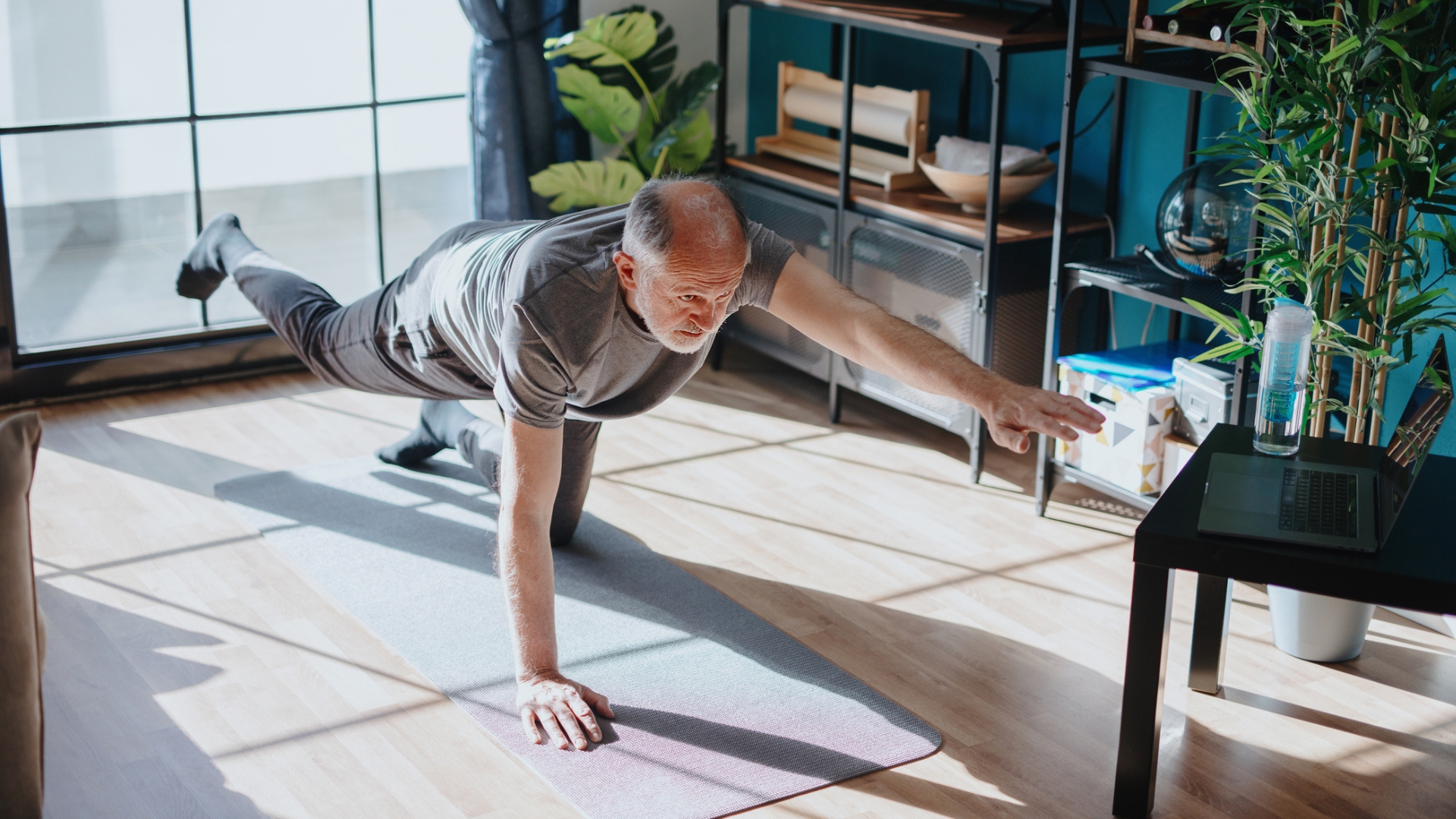
You may not think much about your balance now, but it plays a big role in your health and longevity as you age.
A 2022 study in the British Journal of Sports Medicine found that people who couldn’t balance on one leg for 10 seconds had a higher risk of cardiovascular disease, obesity and even death. Weak balance can also increase your risk of falls, which can lead to serious injury.
Fortunately, balance can be improved. I give these five exercises to my personal training clients over 50, but they’re beneficial for all ages.
All you need is an exercise mat or a towel for extra cushioning for your knees.
Five of the best balance exercises
1. Clamshell
Sets: 3 Reps: 15 on each side
- Lie on your side with your knees bent and one leg on top of the other.
- Engage your core and maintain a neutral spine.
- Keeping your feet together, rotate your top knee upward.
- Slowly lower it back down.
- Complete 15 repetitions, then repeat on the other side.
Why it works: The clamshell strengthens your glutes and hip abductors, which helps with pelvic stability. The stronger these muscles are, the more balanced and supported your body is while walking, running, climbing stairs, or getting up from the floor.
Trainer tip: Avoid letting your top hip drop backward as you lift your knee.
2. Bird dog
Sets: 3 Reps: 12 on each side
- Start on your hands and knees.
- Engage your core and maintain a neutral spine.
- Extend one leg behind you and the opposite arm in front, both parallel to the floor.
- Pause briefly, then return to the starting position.
- Repeat on the other side.
- Continue alternating to complete your repetitions on each side.
Why it works: Bird dog is one of the best exercises for deep core strength. It works your transverse abdominis and internal obliques, which help stabilize your spine and keep you upright. Bird dog also challenges your body awareness and coordination—both fundamental for balance.
Trainer tip: Don’t let your lower back sink toward the floor. Keep your hips level to the floor, and avoid shifting side to side as you lift your arms and legs.
3. Standing march
Sets: 3 Reps: 15 on each side
- Stand with your feet hip width apart.
- Engage your core and maintain a neutral spine.
- Lift one knee to hip height, then lower it to the floor.
- Repeat on the other side.
- Continue alternating to complete your repetitions on each side.
Why it works: Standing marches challenge you to remain stable and upright while shifting your weight from side to side. The move engages your core and hips to improve balance and coordination for everyday activities like walking and climbing stairs.
Trainer tip: Use a chair for support if needed. Focus on standing tall on your balancing leg and avoid shifting side to side.
4. Heel-to-toe walking
Sets: 1 Reps: 10 steps in each direction
- Stand tall and engage your core.
- Imagine a straight line in front of you.
- Step forward with one foot on the imaginary line.
- Follow with your other foot, aligning your heel directly in front of your toes.
- Continue walking for 10 steps, turn around then repeat.
Why it works: Heel-to-toe walking lowers your center of gravity, narrowing your base of support and forcing your stabilizing muscles in your hips and core to work harder. It’s an excellent way to train muscles to engage when you’re off balance.
Trainer tip: Practice near a wall first for extra support if you need it.
5. Single-leg touchdown
Sets: 3 Reps: 10 on each side
- Stand tall with your feet hip width apart.
- Engage your core and maintain a neutral spine.
- Lift one foot off the floor, balancing on the other.
- Bend at the knee of your balancing leg as if you were doing a single leg squat.
- Reach down to touch your balancing foot with your opposite hand.
- Slowly return to standing.
- Complete your repetitions on one side, then repeat on the other.
Why it works: This is a more advanced balance exercise. Not only are you balancing on one foot, but challenging your balance in motion, too. Falls don’t usually happen while standing still, so training stabilizing muscles during movement is important.
Trainer tip: Use a chair or wall for support if needed. If you can’t touch your toes at first, touch your thigh or knee instead.







